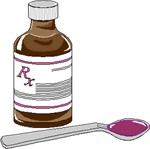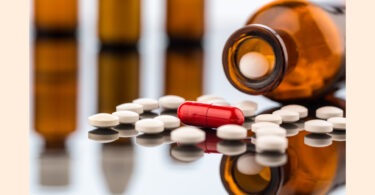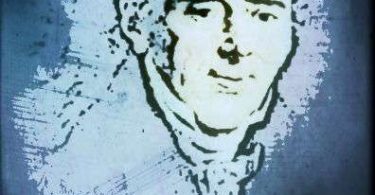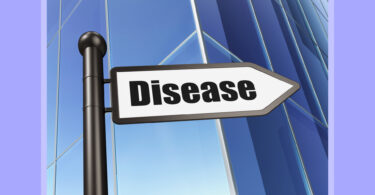The Limitations of the Dry Dose
The next major renovations in the practice of Hahnemannian Homoeopathy appear in the second part of the 1837 edition of The Chronic Diseases in the article called Concerning the Technical Part of Homoeopathy. This is a very valuable article as it acts as the technical complement to the methods he introduced in the 1833 edition of the 5th Organon.
Hahnemann intended that the various editions of Organon and The Chronic Diseases should be read together as they form a complete picture of the latest developments in Homoeopathy.
These techniques not only brought the centesimal system of Homoeopathy closer to perfection, but also pointed out the direction it would be taking in the future. In the 1837 commentary Hahnemann begins by assessing his experience of the dosing procedures that he used during the late 1820s and shares the outcome of his latest research in Homoeopathy.
He says:
“Since I last addressed the public concerning our healing art I have had among other things also the opportunity to gain experience as to the best possible mode of administering the dose of the medicines to the patients, and I herewith communicate what I have found best in this respect.
A small pellet of one of the highest dynamizations of a medicine laid dry upon the tongue, or the moderate smelling of an open vial where one or more such pellets are contained proves itself the smallest and weakest dose with shortest period of duration of its effects.”
Due to the great diversity of age, predispositions, sensitivities, physical constitutions, mental temperaments, reserves of vital powers, and environmental factors, etc., a homoeopath needs a flexible dosage system that allows for the adjustment of the remedy for each individual case. This is something that the medicinal solution supplies.
Vide Concerning the Technical Part of Homoeopathy.
“Nevertheless the incredible variety among patients as to their sensitivity, their age, their spiritual and bodily development, their vital powers, and especially in the nature of their disease necessitates a great variety in their treatment, and also in the administration to them of the doses of medicine.”
 The best way to adjust each individual dose of a remedy to the sensitivity of the individual constitution is to use the medicinal solution. This is because the aqueous solution is far more flexible than the dosage of the dry pills.
The best way to adjust each individual dose of a remedy to the sensitivity of the individual constitution is to use the medicinal solution. This is because the aqueous solution is far more flexible than the dosage of the dry pills.
Also of great importance is the following revelation that tells us why the untimely repetition of an unadjusted dose causes complications and explains the reason homoeopaths disagree so much about the repetition of doses.
“Before proceeding, it is important to observe, that our vital principle cannot bear well that the same unchanged dose of medicine be given even twice in succession, much less more frequently to a patient. For by this the good effect of the former dose of medicine is either neutralized in part, or new symptoms proper to the medicine, symptoms which have never before been present in the disease appear, impeding the cure.
Thus even a well selected homoeopathic medicine produces ill effects and attains its purpose imperfectly or not at all. Thence come the many contradictions of homoeopathic physicians with respect to the repetition of doses.”
The fact that the vital force cannot adapt to the repetition of an unadjusted dose is the conclusion of around 40 years of experimentation and should not be taken lightly. In the 6th Organon, Hahnemann adds that even with the perfect remedy it is unwise “to let the patient have a second or third dose taken dry.”
The production of these side-effects is the main reason why repeating remedies before the relapse of symptoms is contraindicated in the Homoeopathy of the 4th Organon. The use of the medicinal solution overcomes this problem because it can be adjusted with succussions so that the patient never receives the exact same potency twice.
Vide Concerning the Technical Part of Homoeopathy
“But in taking one and the same medicine repeatedly (which is indispensable to secure the cure of a serious chronic disease) if the dose in every case is varied and modified only a little in its degree of dynamization, then the vital force of the patient will calmly, and as it were willingly, receive the same medicine even at the briefest intervals, very many times in succession with the best results, every time increasing the well being of the patient.
This slight change in the degree of dynamization is even effected, if the bottle which contains the solutions of one or more pellets is merely well shaken five or six times.”
The single unit dose is considered by many to be the only pure form of Classical Homoeopathy as they are only familiar with the 4th Organon “wait and watch” method.
By 1833 the founder of Homoeopathy was using the remedy solution in a split dose so he could repeat a homoeopathic medicine whenever he felt it was necessary. Homoeopathy as commonly practiced has not progressed past the techniques Hahnemann introduced between 1828 and 1829 although his more progressive techniques were published in the 5th Organon in 1833 and The Chronic Diseases in 1837.
The Use of the Medicinal Solution
Hahnemann often communicated his new techniques privately with some of his most respected students before he made them public. One year before the publication of the 1837 edition of The Chronic Diseases, Hahnemann wrote a letter to Constantine Hering in which he gave detailed instructions of the latest techniques relating to the medicinal solutions. He gave the following advice to his life long friend.
This is recorded in Bradford’s Life and Letters of Hahnemann, page 367.
“I have made some improvements in the technicalities of our art, which I will now first communicate to you…..Now, as my medicines are very powerful, I seldom dissolve more than one globule in 7, 15, 20, 30, tablespoons of water [DL], and, because the patient has no distilled water (which, besides, after a few days becomes spoilt and ferments), I employ for this purpose spring or river water mixed with 1-15th or 1-20th part of spirits of wine or I put three or four small pieces of hard wood charcoal into the solution.
This mixture, (of which the patient affected with a chronic malady takes a tablespoon or 1, 2 or 3 teaspoons [DL] every day, or every other day, is to be shaken in the bottle five or six times every dose taken, in order to change the degree of dynamization each time. [DL]”
This is the first document we have that Hahnemann gives the full details of the split dose and medicinal solution. Hahnemann suggested that the medicinal solution be preserved with 1-15th or 1-20th parts of spirits of wine. Where alcohol was unsuitable Hahnemann used three of four small pieces of hard wood charcoal instead.
He was witnessed later in his career putting 1 teaspoon of alcohol into 4 oz. of water as a preservative. We find that in environments that tend toward easy spoilage, up to 1/3 of the solution must be preserved with brandy.
In Hahnemann’s letter to Hering he mentions the proper amount of the solution to be given to the patient varies from 1, 2 or 3 teaspoons, depending on the sensitivity of the constitution, age, nature of the disease, etc.
In the following year of 1837 Hahnemann released to the public the conclusion of his experiments with the technical methods of giving the homoeopathic dose. In this article he also gives the advice about the repetition of the remedies in acute and chronic diseases.
Vide Concerning the Technical Part of Homoeopathy
“Experience has shown me, as it has no doubt also shown to most of my followers that it is most useful in diseases of any magnitude (not excepting even the most acute, and still more so in the half-acute, in the tedious and most tedious) to give to the patient the powerful homoeopathic pellet or pellets only in solution, and this solution in divided doses [DL].
In this way we give the medicine, dissolved in seven to twenty tablespoons of water without any addition, in acute and very acute diseases every hour or every half hour, a tablespoon at a time, with weak persons or children, only a small part of a tablespoon (one or two teaspoons or coffee spoonfuls) may be given as a dose.
In chronic diseases I have found it best to give a dose (e. g., a spoonful) of a solution of the suitable remedy at least every two days, more usually every day.”
Hahnemann had experimented with the use of the homoeopathic remedies in water ever since the early provings of homoeopathic remedies in 1813. He used the water dose as one of his techniques of controlling the toxicity and power of the remedies during the provings. The new split-dose is succussed just before each dose is ingested to raise the potency in an upward direction.
By replacing the single unit dose with the new split-dose it became possible to use one pill several times! This apparent contradiction is resolved by the fact that the remedy solution is made with only one #10 pill that is dissolved into several liquid portions that are used repeatedly.
For this reason Hahnemann called his new technique the “split-dose” method instead of a “multi-dose” method, as in this sense it is a still only one dose (i.e., one pill).
Hahnemann realized early on that too many doses of the dry pills accumulated until they produced troublesome aggravations. Even though the patient may be taking the solution more times they are still receiving a smaller amount than they would if they repeated a dry dose even once. This is a very subtle aspect of the theory of the minimal dose that took Hahnemann many years to fully understand.
Preparing and Administering the Medicinal Solution
The preparation of the remedy solution for the centesimal potencies can be summarized in 7 easy steps.
1. Take a 6 to 8 oz. bottle and drop in one, rarely two, # 10 pills of the chosen remedy. Hahnemann suggested that the size of the medicinal solution could vary from 3.5 to 4 oz. (7 to 8 tablespoons) up to 20 ounces (4O tablespoons) of water mixed with brandy. I usually use between 4 to 6 oz. of liquid in my medicinal solutions. I use slightly larger bottles because this leaves enough space to produce good succussions. When speaking of succussing to make potencies Hahnemann suggested leaving up to 1/3 of the vial empty. The larger medicinal solutions (8 oz., 12 oz., etc.) are only necessary when one is treating a hypersensitive, as the larger amount of water makes the dose act more gently.
2. Add enough water mixed with brandy to fill the bottle up to 2/3 to 3/4 full with liquid. A sufficient amount of brandy or pure alcohol, as a preservative, should be included in the solution. If the solution is to be used over a long period of time mix 30% to 50% brandy with the water used in the solution. A lesser amount of ever-clear would do the job.
3. The bottle is to be succussed just prior to ingestion in order to activate the remedy and slightly raise the potency. The number of succussions greatly affects the action of the remedy on the vital force. For those who are hypersensitive 1, 2, or 3 succussions is usually enough. Those of an average sensitivity more normally need 4, 5, 6 or 7 succussions. Those who have rather low sensitivity may need 8, 9, 10, 11, 12 or more succussions. It is best to start with a lower number of succussions and increase the amount if and when necessary. Succussions are one of the methods of adjusting the dose.
4. In this article Hahnemann suggests that 1, 2, or 3 teaspoons of the medicinal solution should be given to the client depending on their sensitivity. Children are given 1/2 teaspoon. Infants should receive 1/4 teaspoon or less depending on their age. Most adults do quite well starting out with 1 teaspoon. The size of the dose can be gradually increased if more reaction is needed. A constitution of a lower sensitivity might need 2 or 3 teaspoons before they will react sufficiently to the remedy.
Hahnemann’s Paris casebooks demonstrate that the old master later preferred to use a medicinal solution and a dilution glass to further attenuate his dose. 1, 2, or 3 teaspoons of the medicinal solution are stirred into 4 oz. of water and 1, 2, or 3 teaspoons are given to the patient as a dose. Hahnemann gave his centesimal potencies for the most part in the exact same manner as his LM potencies. The dose can also be adjusted by the amount of the remedy given.
5. The dose should be adjusted through a series of dilution glasses when treating a hypersensitive, an elderly person, severe pathological tissue changes, allergies or any dangerous condition. Succuss the remedy bottle with a conservative number of succussions and take one teaspoon and stir it into the first dilution glass. From this glass take a teaspoon and stir it into a second dilution glass and from this a dose is given to the client.
An extreme hypersensitive may need the remedy diluted through 2 or 3 such dilution glasses. In this case a teaspoon or less is taken from the first glass and stirred into a second or third glass. These individuals are normally almost impossible to treat with Homoeopathy but adjusting the dose in this manner brings them great relief.
6. Give the client one test dose and wait and watch for a reasonable amount of time to see how the remedy reacts. This time period depends somewhat on the timeline of the disease you intend to treat. Acute and chronic diseases each have their own peculiar nature. If there is a striking response and a dramatic improvement let the single dose act without interference. If there is only a slow or moderate improvement the dose may be repeated at proper intervals to speed the cure.
7. If the remedy produces any aggravation it is best to wait and watch for the expected amelioration. If the remedy is going to be given again it must be adjusted in a downward direction. This means one could use a lower potency, less succussions, a smaller dose, one or more dilution glasses, or give only one dose or repeat the remedy at longer intervals. The homoeopath can use one or more of these techniques as needed. These are examples of how to adjust the dose in a downward direction.
Of course, all the normal precautions should be taken and the client asked not to eat or drink 1/2 hour before and after taking the remedy. These are the basic instructions on how to prepare and administer the liquid dose.
It may take some time to learn how to adjust the dose to fit the sensitivity of the individual as well as to match the nature of the disease to be treated. This comes with time and experience.
Some may ask why go through all the trouble to use the medicinal solutions? The answer is quite simple. Do you want to treat the most chronically ill and the most hypersensitive persons? Do you want to speed the time of cure to 1/2, 1/4 or less the time it takes with the dry dose? Do you want to use Hahnemann’s most advanced methods and walk in his footsteps?
If you do, then a little more effort on your part is well worth while.






